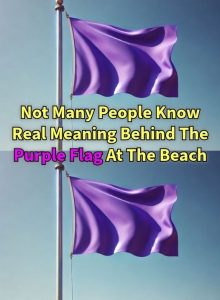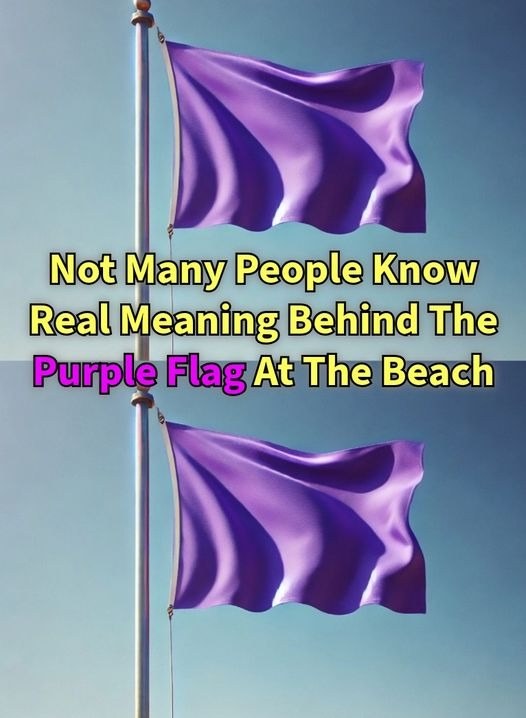Because they give beachgoers vital information about weather, water conditions, and potential hazards, beach flags are essential to ocean safety. Every flag hue has a distinct function, warning travelers of potential threats that may not always be readily apparent. Red flags indicate strong currents or turbulent conditions, while green flags, which are among the most widely used beach flags, indicate calm, safe waters. One flag, though, that many people frequently overlook is the purple flag, which bears a special and significant warning concerning marine pests.
Few people are aware of the purple flag, yet it can be equally as important as the more widely recognized red or yellow flags. This symbol alerts swimmers and beachgoers to the presence of potentially dangerous marine life, such as stingrays, jellyfish, or other marine animals. Because these organisms can be difficult to spot in the water and their existence is not always evident, the purple flag’s warning is especially crucial. As a result, the purple flag is an essential tool for protecting people from hazards that lurk beneath the water’s surface.

For instance, one of the most prevalent species linked to the purple flag warning is jellyfish. Despite their beauty, their sting may be excruciatingly uncomfortable and, in certain situations, even harmful, particularly for people who are more susceptible to the toxins or may have allergies. The venom of some jellyfish species, such as the box jellyfish, can be fatal. A raised purple flag indicates the presence of these animals and warns swimmers to exercise caution.
Stingrays are another sea animal that can be dangerous, in addition to jellyfish. Stingrays protect themselves by using their barbed tails. Unknowingly stepping on a stingray while swimming in shallow waters might cause it to sting in self-defense. Serious harm, such as deep puncture wounds and infections, may result from this. The presence of a purple flag indicates that one should remain vigilant and aware of these subterranean monsters.
A purple flag can also indicate the presence of various marine pests, including sharks, sea urchins, and even hazardous fish like stonefish. Even though they are less frequent than stingrays or jellyfish, these creatures can nonetheless pose a threat to swimmers and waders. By increasing awareness of these risks, a purple flag enables beachgoers to take the appropriate safety measures to prevent harm.
It’s crucial to remember that the purple flag is a warning sign rather than a sign of impending danger. Although marine pests might be a major worry, beachgoers are not always at risk when they are present. Nonetheless, the purple flag acts as a warning symbol, advising people to remain vigilant, keep out of specific regions, or exercise caution when going into the water. Whether it means swimming somewhere else, using protective gear like water shoes or stinger suits, or just being more cautious when going into the ocean, beachgoers should heed this warning.
A safer and more pleasurable beach trip depends on knowing what beach flags, especially the purple flag, represent. Being mindful of the animals that share the ocean with us is just as important to beach safety as avoiding potentially harmful waves or currents. It is possible to avoid mishaps, injuries, and even death by taking the time to understand the meaning of each flag.
Additional information regarding marine pests and self-defense measures may be available from local authorities or lifeguards in certain areas. This could include instructions on how to securely remove a stingray barb, how to deal with jellyfish stings, or how to identify potentially harmful organisms before going into the water.
Thus, look for the purple flag the next time you’re at the beach. The ocean itself is reminding us to be mindful of the life that exists beneath the waves. You may enjoy your time by the water with more assurance if you heed these warnings and respect the ocean’s strength and unpredictable nature. This is because you’ll know that you’ve taken the necessary precautions to keep yourself and others around you safe.
In the end, beach flags are an essential instrument for enhancing the safety of our ocean experiences. For everyone who loves the ocean, the purple flag in particular is a crucial sign, and knowing what it means guarantees that everyone may enjoy a safer and more pleasurable beach experience.
